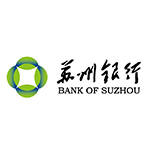BANK OF SUZHOU(002966)
Search documents
苏州银行:股东国发集团及其一致行动人东吴证券7月1日至12月5日增持1%股份
Mei Ri Jing Ji Xin Wen· 2025-12-08 10:08
每经AI快讯,12月8日,苏州银行(002966)(002966.SZ)公告称,公司股东国发集团及其一致行动人东 吴证券于2025年7月1日至12月5日期间通过集中竞价交易增持公司股份4470.6654万股,占总股本的 1.00%,权益变动触及1%整数倍。增持后,国发集团及其一致行动人合计持有苏州银行71,530.5978万 股,占总股本的16.00%。本次增持为履行已作出的承诺,不会导致公司控制权变化。 ...
苏州银行:股东国发集团及其一致行动人东吴证券合计增持4470.6654万股股份
Bei Jing Shang Bao· 2025-12-08 10:03
北京商报讯(记者 孟凡霞 周义力)12月8日,苏州银行发布公告,该行于2025年12月8日收到大股东苏 州国际发展集团有限公司(以下简称"国发集团")出具的《关于权益变动的告知函》。国发集团及其一 致行动人东吴证券股份有限公司于2025年7月1日至2025年12月5日期间通过深圳证券交易所交易系统集 中竞价交易合计增持苏州银行股份4470.6654万股,占总股本的1.00%。本次增持后,大股东国发集团及 其一致行动人东吴证券合计持有苏州银行股份7.15亿股,占苏州银行总股本的16.00%,权益变动触及 1%整数倍。 ...
苏州银行(002966.SZ):国发集团及其一致行动人东吴证券累计增持1%股份
Ge Long Hui A P P· 2025-12-08 09:40
格隆汇12月8日丨苏州银行(002966.SZ)公布,收到大股东苏州国际发展集团有限公司(简称"国发集 团")出具的《关于权益变动的告知函》。国发集团及其一致行动人东吴证券股份有限公司(简称"东吴 证券")于2025年7月1日至2025年12月5日期间通过深圳证券交易所交易系统集中竞价交易合计增持本行 股份4,470.6654万股,占总股本的1.00%。本次增持后,大股东国发集团及其一致行动人东吴证券合计 持有本行股份71,530.5978万股,占本行总股本的16.00%,权益变动触及1%整数倍。 ...
苏州银行获大股东国发集团增持:合计增持超4470万股,占总股本的1%
Xin Lang Cai Jing· 2025-12-08 09:37
12月8日金融一线消息,苏州银行今日发布公告称,该行于2025年12月8日收到大股东苏州国际发展集团 有限公司(以下简称"国发集团")出具的《关于权益变动的告知函》。国发集团及其一致行动人东吴证 券股份有限公司(以下简称"东吴证券")于2025年7月1日至2025年12月5日期间通过深圳证券交易所交 易系统集中竞价交易合计增持本行股份4470.6654万股,占总股本的1.00%。本次增持后,大股东国发集 团及其一致行动人东吴证券合计持有本行股份71,530.5978万股,占该行总股本的16.00%,权益变动触 及1%整数倍。 | 1. 基本情况 | | | | --- | --- | --- | | 信息披露义务人 1 | | 苏州国际发展集团有限公司 | | 住所 | | 江苏省苏州市人民路 3118 号国发大厦北楼 | | 信息披露义务人2 | | 东吴证券股份有限公司 | | 住所 | | 苏州工业园区星阳街5号 | | 权益变动时间 | | 2025年7月1日至2025年12月5日 | | 权益变动过程 | | 国发集团与东吴证券于 2025年7月1日至 2025年12 | | | | 月 5 日期间 ...
苏州银行(002966) - 关于大股东及其一致行动人增持股份触及1%整数倍的提示性公告
2025-12-08 09:31
证券代码:002966 证券简称:苏州银行 公告编号:2025-094 变动类型 上升 下降□ 一致行动人 有 无□ 是否为第一大股东或实际控制人 是 否□ 2.本次权益变动情况 股份种类 增持股数(万股) 增持比例(%) A 股 4,470.6654 1.00 合 计 4,470.6654 1.00 本次权益变动方式(可多 选) 通过证券交易所的集中交易 通过证券交易所的大宗交易 □ 其他 □ 本次增持股份的资金来 源(可多选) 自有资金 银行贷款 □ 其他金融机构借款 □ 股东投资款 □ 其他 □ 不涉及资金来源□ 3.本次变动前后,投资者及其一致行动人拥有上市公司权益的股份情况 股份性质 本次变动前持有股份 本次变动后持有股份 股数(万股) 占总股本 比例(%) 股数(万股) 占总股本 比例(%) 国发集团 66,684.9324 14.92 68,805.9511 15.39 东吴证券 375.0000 0.08 2,724.6467 0.61 合计持有股份 67,059.9324 15.00 71,530.5978 16.00 其中:无限售条件股份 67,059.9324 15.00 71,530. ...
城商行板块12月8日跌0.31%,上海银行领跌,主力资金净流入1.29亿元
Zheng Xing Xing Ye Ri Bao· 2025-12-08 09:09
从资金流向上来看,当日城商行板块主力资金净流入1.29亿元,游资资金净流入2676.7万元,散户资金净 流出1.56亿元。城商行板块个股资金流向见下表: | 代码 | 名称 | 收盘价 | 涨跌幅 | 成交量(手) | 成交额(元) | | | --- | --- | --- | --- | --- | --- | --- | | 601187 | 厦门银行 | 7.46 | 3.32% | 33.34万 | | 2.47亿 | | 601169 | 北京银行 | 5.63 | 0.72% | 148.87万 | | 8.36亿 | | 600926 | 杭州银行 | 15.67 | 0.38% | 32.43万 | | 5.08亿 | | 600928 | 西安银行 | 3.80 | 0.26% | 22.86万 | | 8678.18万 | | 601997 | 贵阳银行 | 6.01 | 0.17% | 25.10万 | | 1.51亿 | | 601577 | 长沙银行 | 9.54 | 0.00% | 15.38万 | | 1.47亿 | | 001227 | 兰州银行 | 2.37 | 0.00% ...
中证500价值ETF(562330)开盘涨3.58%





Xin Lang Cai Jing· 2025-12-08 01:39
中证500价值ETF(562330)业绩比较基准为中证500价值指数收益率,管理人为银华基金管理股份有限 公司,基金经理为马君,成立(2023-04-07)以来回报为17.33%,近一个月回报为0.19%。 风险提示:市场有风险,投资需谨慎。本文为AI大模型自动发布,任何在本文出现的信息(包括但不 限于个股、评论、预测、图表、指标、理论、任何形式的表述等)均只作为参考,不构成个人投资建 议。 来源:新浪基金∞工作室 12月8日,中证500价值ETF(562330)开盘涨3.58%,报1.215元。中证500价值ETF(562330)重仓股方 面,东吴证券开盘涨1.55%,西部矿业涨0.69%,苏州银行涨0.00%,永泰能源跌0.60%,杰瑞股份涨 0.06%,均胜电子涨0.00%,云天化涨0.48%,天山铝业涨0.78%,神火股份涨0.18%,上海电力跌 0.35%。 ...
苏州银行:截至2025年11月30日股东户数为61865户
Zheng Quan Ri Bao· 2025-12-05 15:41
证券日报网讯 12月5日,苏州银行在互动平台回答投资者提问时表示,截至2025年11月30日,本行股东 户数为61865户。 (文章来源:证券日报) ...
苏州银行行长助理马天舒任职资格获批
Bei Jing Shang Bao· 2025-12-05 12:15
据苏州银行此前披露的人事简历,马天舒,1970年9月出生,本科学历,现任苏州金融租赁股份有限公 司总裁、董事。历任中国建设银行常熟市支行信用卡部办事员、常熟吴市办事处副主任、东张办事处副 主任、东张分理处主任、电厂分理处主任、常熟支行行长助理、太仓支行副行长、常熟支行副行长、常 熟分行副行长,苏州银行常熟支行行长、总部房地产事业部总裁、总部风险授信部风险总监、总部风险 总监兼风险合规部总经理、南京区域总裁、南京分行行长、南京分行党委书记,苏州金融租赁股份有限 公司党委书记、总裁、董事。 北京商报讯(记者 孟凡霞 周义力)12月5日,苏州银行发布公告,该行近日收到《江苏金融监管局关于 马天舒苏州银行行长助理任职资格的批复》,核准马天舒担任苏州银行行长助理的任职资格。 ...
苏州银行:马天舒行长助理任职资格获核准
Xin Lang Cai Jing· 2025-12-05 11:17
12月5日金融一线消息,苏州银行今日发布公告称,该行近日收到《江苏金融监管局关于马天舒苏州银 行行长助理任职资格的批复》(苏金复〔2025〕438 号),核准马天舒苏州银行行长助理任职资格。 责任编辑:王馨茹 12月5日金融一线消息,苏州银行今日发布公告称,该行近日收到《江苏金融监管局关于马天舒苏州银 行行长助理任职资格的批复》(苏金复〔2025〕438 号),核准马天舒苏州银行行长助理任职资格。 责任编辑:王馨茹 ...



